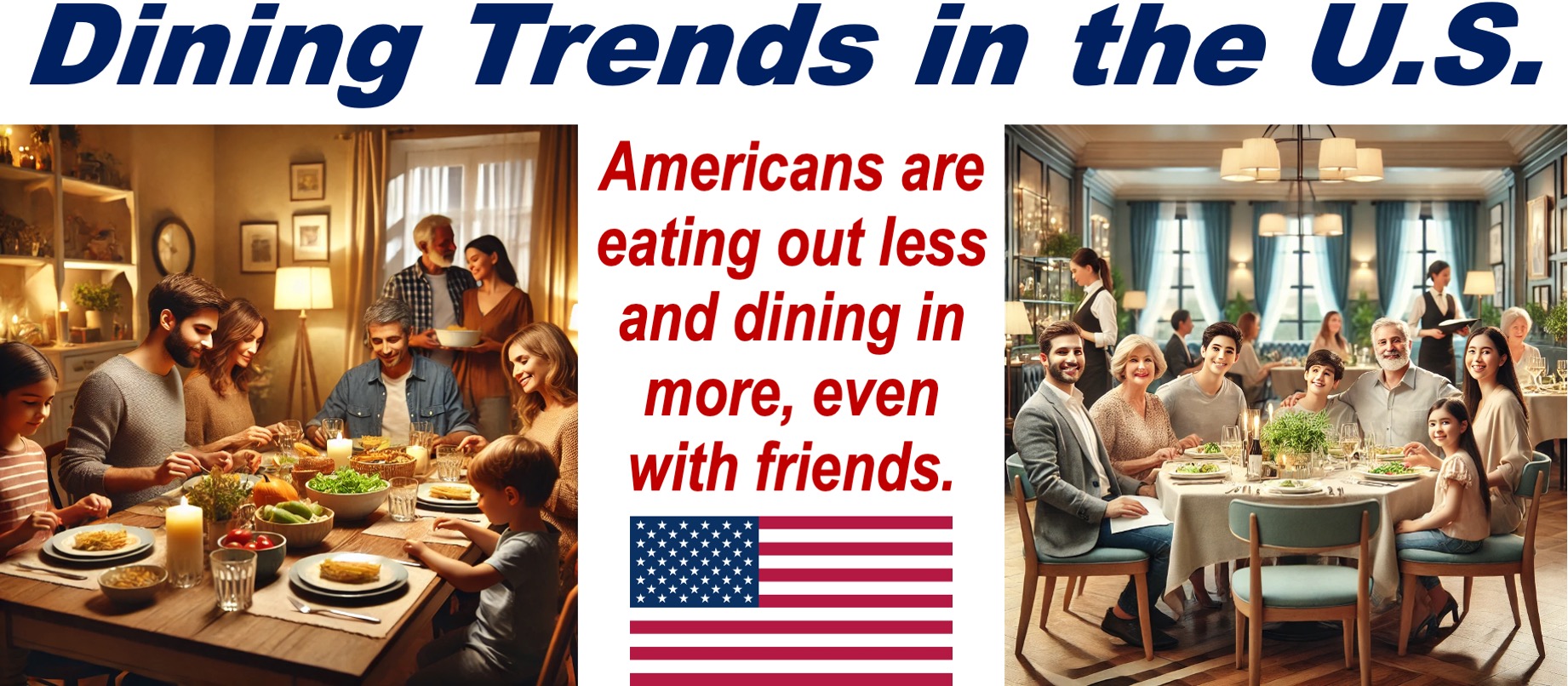Inflation’s Impact on Dining Trends
As inflation eases across the United States, a notable shift in dining trends has emerged: more people are opting to cook meals at home rather than dine out.
This change in dining habits has been driven by a combination of economic factors, including the easing of inflation in grocery stores, and the rising cost of eating out.
While inflation in general has been declining, food prices in grocery stores have dropped at a faster rate compared to restaurant prices, leading to a significant change in consumer spending patterns.
Major chains like McDonald’s and Olive Garden have reported declines in sales as more Americans tighten their budgets and prioritize grocery shopping over restaurant visits.
The trend, initially driven by high inflation during the pandemic, continues as many Americans remain cautious about discretionary spending.
Grocery Shopping on the Rise
With consumers increasingly cooking at home, grocery stores have seen a rise in sales, benefiting from the shift in dining trends.
Companies like General Mills, which produces popular grocery items such as Cheerios and Haagen-Dazs, have witnessed an uptick in demand as people seek affordable meal options.
Rodney McMullen, CEO of Kroger, expressed optimism about the company’s performance, noting a rise in sales as more consumers prioritize essential groceries.
The change is not just about saving money on food; many consumers are now choosing the convenience and cost savings of home-cooked meals over restaurant dining.
With food companies responding by reducing prices to attract budget-conscious consumers, this trend is expected to continue, benefiting grocery stores in the long term.

Challenges for the Restaurant Industry
The shift in consumer behavior has been challenging for the restaurant industry, which has seen reduced customer traffic and lower sales.
A 2.6% decline in restaurant visits in the US during the first half of the year, as reported by research firm Circana, has raised concerns about the economic health of the sector.
Major restaurant chains have introduced promotions and discounts in an effort to entice customers back, but the rising cost of dining out remains a barrier.
Fast food chains like McDonald’s, Wendy’s, and Burger King have responded by rolling out budget-friendly meal deals, but these efforts have not been enough to prevent a dip in sales.
Restaurant owners are increasingly feeling the pinch as they struggle to maintain profit margins amid higher labor and food costs. In response, some restaurateurs are offering creative solutions, such as adjusting portion sizes or sourcing local ingredients to keep costs down while still delivering quality meals.
The Role of Economic Uncertainty
Economic uncertainty has also contributed to the trend of dining out less. With many consumers feeling the pressure of rising debts and potential economic instability, discretionary spending has been reduced.
A recent survey by the Conference Board found that nearly 45% of consumers plan to cut back or eliminate spending on dining out over the next six months.
Parents and families, in particular, have been scaling back their use of fast food and delivery services, traditionally seen as convenient options. However, the rising cost of these services has made them less attractive.
Consumers, especially in lower-income brackets, are now turning to grocery stores as the more cost-effective option for feeding their families.
Adapting to the New Dining Landscape
As more Americans shift their focus to cooking at home, restaurants and food producers are adapting to a new dining landscape.
For restaurants, this means refining their pricing strategies, offering more value-driven deals, and catering to customers seeking affordable but high-quality meals.
Food producers, on the other hand, have seen an opportunity in the home-cooking trend. By offering competitive prices and focusing on essential food items, they have been able to capture a larger share of the market as consumers prioritize grocery shopping.
Final Thoughts
Looking ahead, industry experts anticipate continued competition between grocery stores and restaurants as they fight to attract value-conscious customers.
With price wars expected in both sectors, the battle for consumer loyalty will shape the future of dining in the U.S.
This shift in dining trends highlights the ongoing influence of economic factors on consumer choices. As inflation eases but economic uncertainty persists, both the restaurant industry and food producers will need to continue adapting to meet the evolving demands of their customers.
